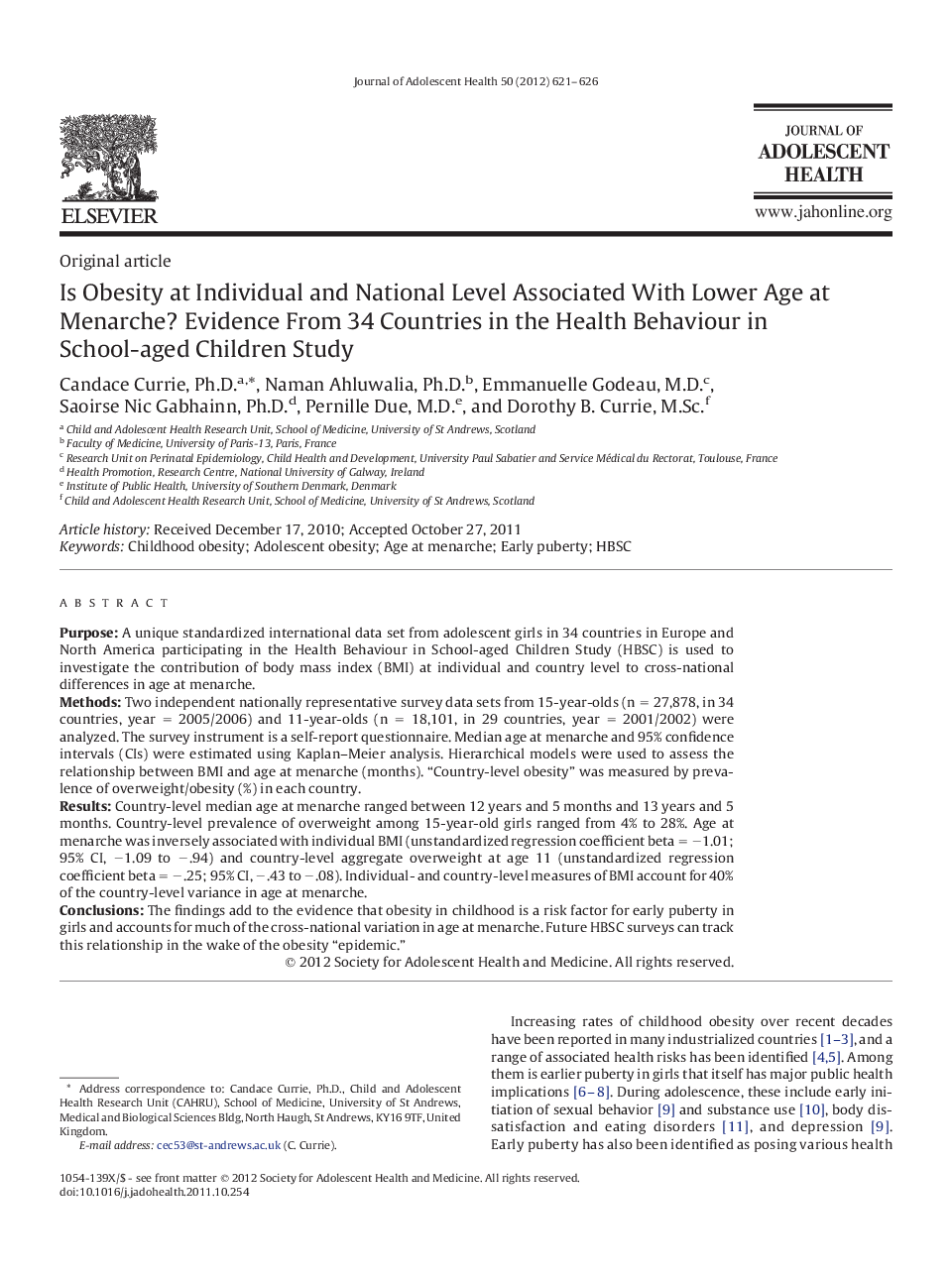| Article ID | Journal | Published Year | Pages | File Type |
|---|---|---|---|---|
| 1079462 | Journal of Adolescent Health | 2012 | 6 Pages |
PurposeA unique standardized international data set from adolescent girls in 34 countries in Europe and North America participating in the Health Behaviour in School-aged Children Study (HBSC) is used to investigate the contribution of body mass index (BMI) at individual and country level to cross-national differences in age at menarche.MethodsTwo independent nationally representative survey data sets from 15-year-olds (n = 27,878, in 34 countries, year = 2005/2006) and 11-year-olds (n = 18,101, in 29 countries, year = 2001/2002) were analyzed. The survey instrument is a self-report questionnaire. Median age at menarche and 95% confidence intervals (CIs) were estimated using Kaplan–Meier analysis. Hierarchical models were used to assess the relationship between BMI and age at menarche (months). “Country-level obesity” was measured by prevalence of overweight/obesity (%) in each country.ResultsCountry-level median age at menarche ranged between 12 years and 5 months and 13 years and 5 months. Country-level prevalence of overweight among 15-year-old girls ranged from 4% to 28%. Age at menarche was inversely associated with individual BMI (unstandardized regression coefficient beta = −1.01; 95% CI, −1.09 to −.94) and country-level aggregate overweight at age 11 (unstandardized regression coefficient beta = −.25; 95% CI, −.43 to −.08). Individual- and country-level measures of BMI account for 40% of the country-level variance in age at menarche.ConclusionsThe findings add to the evidence that obesity in childhood is a risk factor for early puberty in girls and accounts for much of the cross-national variation in age at menarche. Future HBSC surveys can track this relationship in the wake of the obesity “epidemic.”
